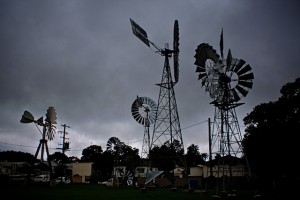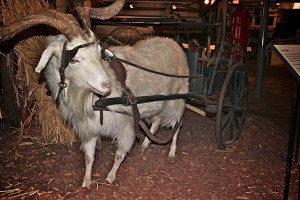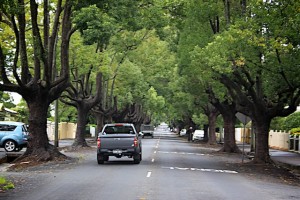Day 28 – 11,473 KM. Town 57. I arrived in a wet Toowoomba late in the day but even though night was drawing in, the green glow that many Queensland locations have was present. Recent rain, of which there has been plenty, was causing vegetation to explode into colour and given I am in “The Garden City” perhaps I should not have been surprised.
I had two tasks I wanted to complete in Toowoomba. Number one was easily achieved and that was to buy an umbrella! With all the rain I decided the best way to stop it was to purchase an umbrella and indeed for much of the day the heavy downpours came to an end with just the odd shower occurring. Hopefully I saved one or two people from getting flooded. My second task was to finally resolve the mystery of Cobb and Co. Now to many Australians, there probably is no puzzle about Cobb and Co, but to a Pom, such as myself, it has always been a bit of a puzzle. Now, with Toowoomba being home to the Cobb & Co museum I thought my curiosity could finally be put to rest.
After taking in a rather impressive display of windmills I ensure I am at the museum ready to enter at 10am. The assistant kindly takes my fee (advising me that it is free if I am a Toowoomba resident) and points me in the direction of the display. Now I must confess I am not greatly interested in horse drawn carriages. I think this is probably because they come across as quite basic affairs – two, or maybe four wheels and something to sit on joining everything together and something to hook the horse or horses to on the front. Now the Cobb and Co museum has every combination of horse carriage you could think of. There are carriages for one person, two people and even busses. There are carriages for loads of wood and carriages pulled by goats and dogs. There are even side displays about the history of Toowoomba, aboriginal history of the area and wildlife and a comprehensive coffee shop. Now this is all wonderful stuff but I was here for the “Cobb and Co” museum and thankfully I did manage to find three different Cobb and Co carriages – Coach numbers 48, 100 and 112.
The story of Cobb and Co appears to be a long affair, but with thanks to the museum displays I’ve learnt hopefully some of the highlights starting back in 1853 when three Americans, including Freeman Cobb decided to set up a stage coaching service in Victoria. Initially the business was called the “American Telegraph Line of Coaches” but in true Australian tradition of abbreviating names, it become known as Cobb and Co. The service was known as a Stage Coach service as a journey would be completed in stages with each coach and horses only covering a distance of between 25 and 40 kilometres.
The first service ran on 20 January 1854 between Melbourne and Castlemaine but by 1856 the original partners sold the business for a huge profit. The service was then extended into New South Wales in 1865 and Queensland in 1866. However by 1890 the decline of the business had commenced. Firstly the railways in southern states caused a decline in the need for the horse transport and later the introduction of motor vehicles. Following the first World War, the Post Office adopted a policy of letting single mail runs for tender to provide work opportunities to returned soldiers. This ended the bulk mail contracts that had been profitable to Cobb and Co.
The last Cobb and Co coach ran on 14 August 1924 between Yuleba and Surat and with Qantas commencing air mail services and the introduction of wireless communication into the bush things were not looking good. Cobb and Co did use motor vehicles towards the end of their life, but the great depression was the final straw with the business going into voluntary liquidation in 1929.
Wherever you go in Australia you are likely to find some connection with this iconic business. Whether its a staging location, the carriage manufacturing in Charleville or a horse breading stud there are many links to this story. I am glad that with the help of the Toowoomba Cobb and Co museum I have a bit better understanding of their operation.




Fiendishly expensive, they were the horse and carrige equivalent of first class air travel.
My Grandfather was a Stage Coach driver For COBB&CO he lived in Chinchilla in Queensland. I have photo’s of him and his Coach and Team of 6 Horses. the Horses Cobb&Co used were specially bred for the work.